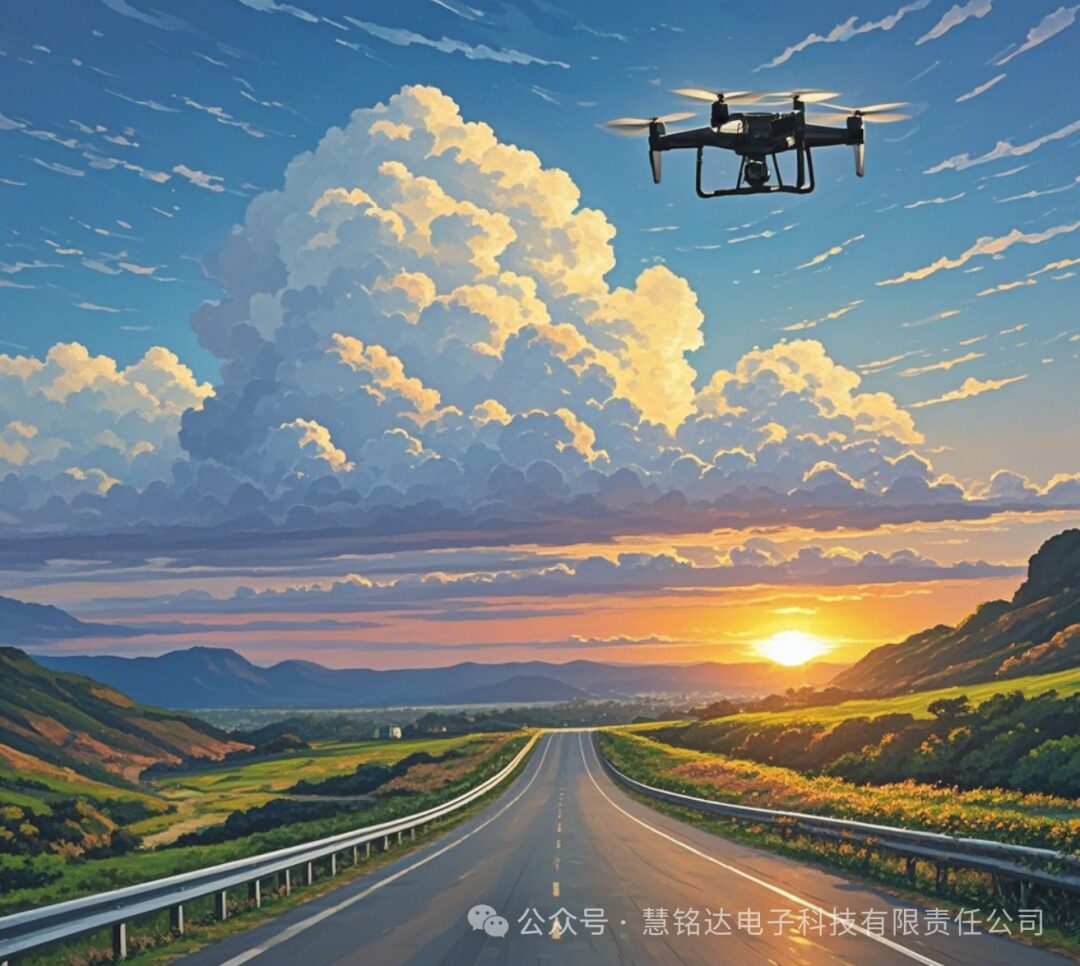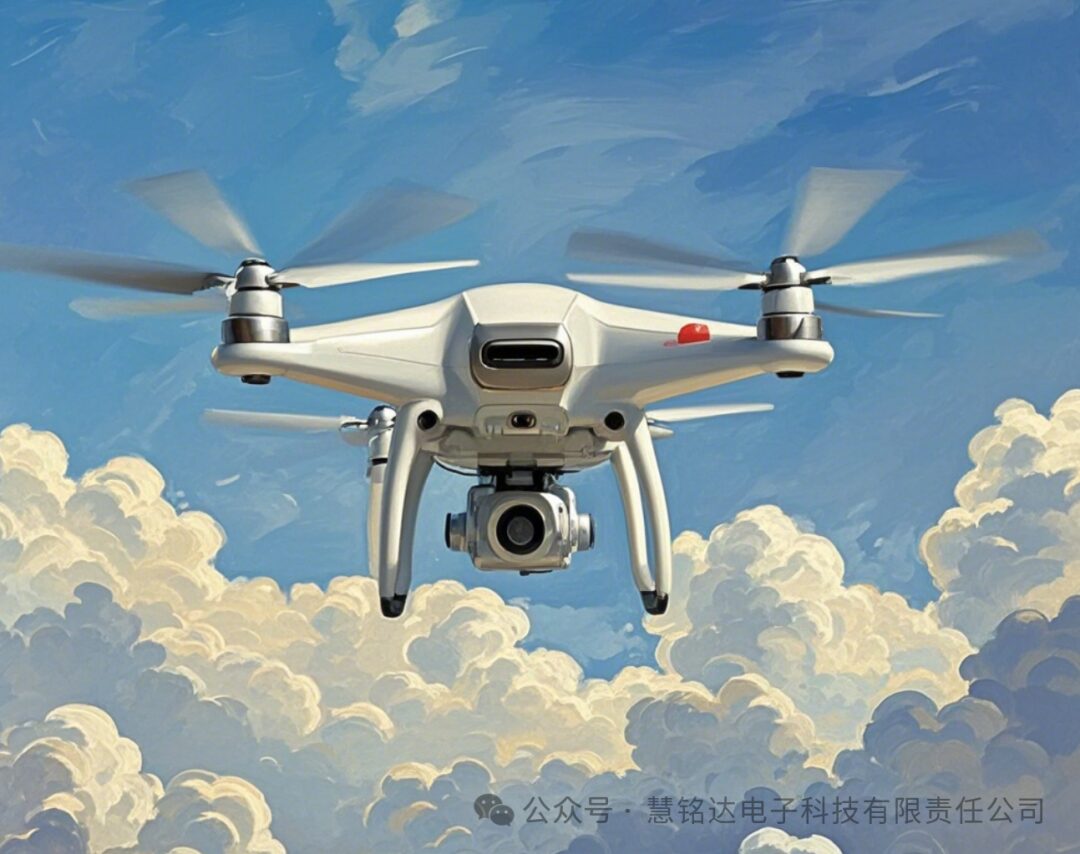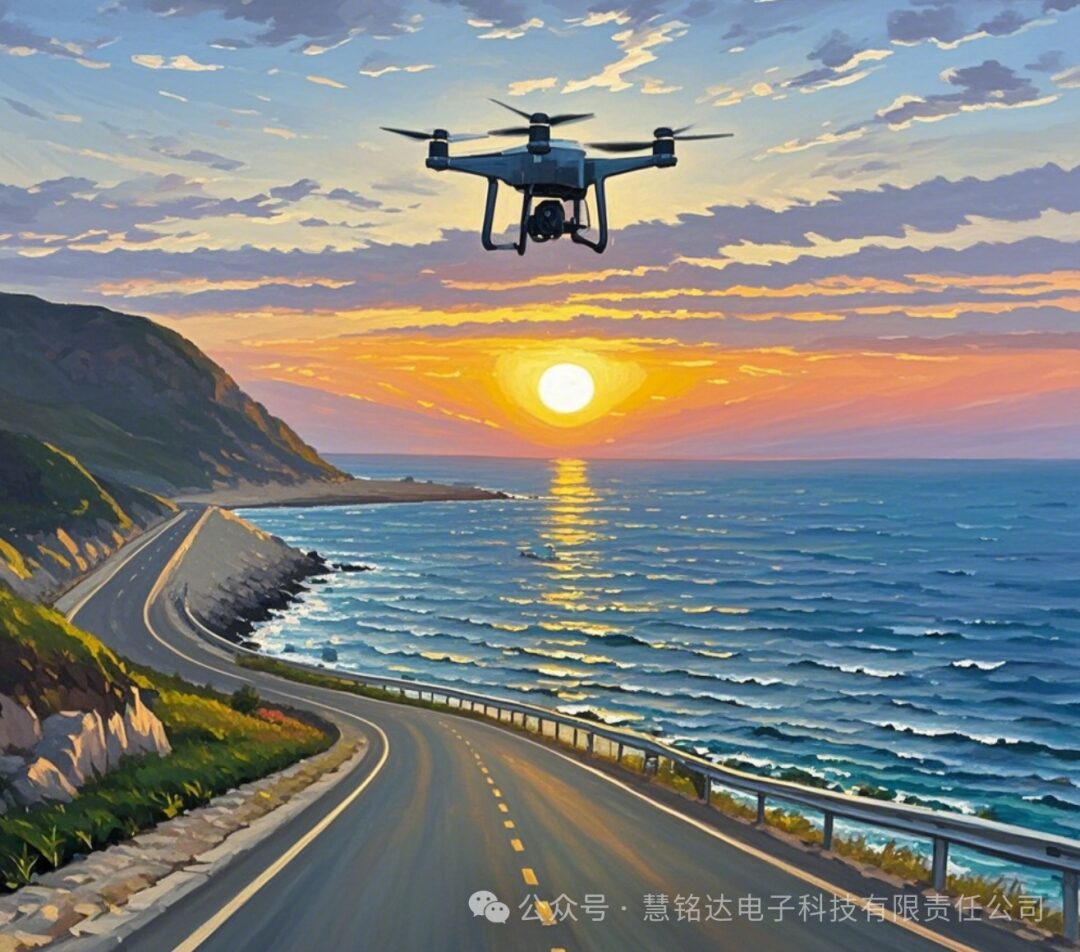Skip to content


When assembling a drone, selecting the appropriate flight control module is a crucial step. The flight control module acts as the brain of the drone, responsible for processing data from various sensors and controlling the drone’s attitude, position, and other flight characteristics based on this data. There are various types of flight control modules available in the market, each with its own features suitable for different application scenarios.

Pixhawk is currently one of the most popular open-source flight controllers, based on an ARM architecture hardware platform and PX4 software stack. It supports various types of aircraft, including multirotors and fixed-wing, with high scalability and flexibility.
Processor: 32-bit ARM Cortex-M4 CPU
IMU: Built-in three-axis gyroscope, three-axis accelerometer, three-axis magnetometer
GPS/COMPASS: External GPS module (such as M8N)
Interface: Rich interface options, including multiple PWM outputs, I2C, SPI, UART, etc.
Firmware: Supports PX4 and ArduPilot mainstream firmware
APM is a professional-level IMU autopilot based on the Arduino Mega platform, capable of achieving stable autonomous flight. It supports up to 8 RC channels and 4 serial ports, suitable for various types of aircraft including multirotors and fixed-wing planes.
Processor: ATmega2560 microcontroller
IMU: External IMU board connected, providing attitude measurement capabilities
GPS/COMPASS: GPS module can be added via an expansion board
Interface: Supports various communication protocols, such as PPM, SBUS, etc.
Firmware: ArduPilot firmware
DJI’s N3 flight control is designed specifically for commercial and industrial applications, with high integration and stability, particularly suitable for multirotor drones. It is compatible with other components in the DJI ecosystem, such as smart ESCs, Lightbridge 2 video transmission systems, etc.
Processor: High-performance embedded processor
IMU: Built-in high-precision inertial measurement unit
GPS/COMPASS: Integrated GPS+GLONASS dual-star positioning system
Interface: Rich input and output ports for connecting additional devices
Firmware: Dedicated firmware, configured via DJI Assistant 2
KISS (Keep It Super Simple) flight control is known for its simplicity, primarily aimed at the FPV racing drone market. Its features include fast response speed and low latency, making it very suitable for performance-focused players.
Processor: STM32F103RCT6 Cortex M3 MCU
IMU: MPU6000 six-axis IMU
GPS/COMPASS: GPS module not included, user needs to add it
Interface: Simplified design reduces unnecessary interfaces
Firmware: Custom firmware focused on enhancing the flying experience
Naze32 is a flight controller based on the STM32 microcontroller and is very popular in the FPV racing community. Its advantages include high cost-performance ratio while providing good performance.
Processor: STM32F103CBT6 Cortex M3 MCU
IMU: MPU6050 six-axis IMU
GPS/COMPASS: Usually requires additional GPS module installation
Interface: Standard PWM interface for motor control
Firmware: Supports Cleanflight/Betaflight and other firmware
Cuav V5+ is a high-performance flight control developed by Leixun Technology, widely used in professional fields. It not only has powerful computing capabilities but also excellent anti-interference capabilities and stability.
Processor: STM32H743ZIT6 Cortex M7 + STM32F405RGT6 Cortex M4 dual-core architecture
IMU: Built-in high-precision IMU, supports redundancy backup
GPS/COMPASS: Supports multi-band GNSS receiver
Interface: Equipped with multiple CAN bus interfaces, supporting complex system construction
Firmware: Supports PX4 firmware

Betaflight is an open-source firmware designed for FPV racing drones, typically used with F4 or F7 level flight control boards. These flight control boards provide high-performance processing capabilities, suitable for drones requiring fast response and complex maneuvering operations.
Processor: STM32F405RGT6 (F4 series) / STM32F722RET6 (F7 series)
IMU: MPU6000 six-axis IMU
GPS/COMPASS: GPS module not included, user needs to add it
Interface: Supports various communication protocols, such as UART, I2C, SPI, etc.
Firmware: Betaflight firmware, focused on improving flight performance, response speed, and advanced tuning capabilities
Features: Supports custom LED configuration, buzzer alerts, and other functions to enhance user experience
8. INAV (Intermediate ArduPilot)
INAV is an open-source flight control project based on Cleanflight, mainly used in fixed-wing and multirotor drones, emphasizing stability and reliability. It can run on various hardware platforms, including but not limited to F4, AT32, F7, and H7 flight controllers.
Processor: Depends on the selected hardware platform, such as STM32F405RG
IMU: Built-in multiple core flight sensors
GPS/COMPASS: Supports various sensor inputs, such as GPS, pitot tube, sonar, laser radar, etc.
Interface: Rich interface options for connecting external devices
Firmware: INAV firmware, providing position hold, altitude hold, return home, and other functions
Features: Supports on-screen display (OSD), with black box logging capabilities
Navio2 is a flight control module designed for developers, capable of working with Raspberry Pi. It supports both multirotor and fixed-wing drones and is compatible with ArduPilot and ROS (Robot Operating System), making it ideal for users looking to customize and develop deeply.
Processor: Raspberry Pi computing platform
IMU: Built-in high-precision IMU
GPS/COMPASS: Supports external GPS module
Interface: Compatible with Raspberry Pi GPIO pins, supports various communication protocols
Firmware: Supports ArduPilot firmware
Features: Suitable for educational and research purposes, allowing developers to perform deep programming and experimentation
The control module under the Prometheus framework is mainly used in industrial-grade drone systems, providing a complete set of solutions from task planning to execution. It integrates advanced technologies such as SLAM (Simultaneous Localization and Mapping) and target detection, suitable for complex environmental perception tasks.
Processor: Depends on the specific hardware implementation
IMU: Integrated high-precision IMU
GPS/COMPASS: Supports multi-band GNSS receiver
Interface: Supports various communication protocols to ensure effective communication with ground stations and other devices
Firmware: Customized firmware, adjusted according to specific task requirements
Features: Powerful data processing capabilities and intelligent decision support, suitable for long-duration tasks and complex environmental operations
Auterion Skynode is a modern flight control solution that combines the advantages of hardware and software, aiming to provide a safe and reliable drone operating experience for enterprise users. It supports PX4 firmware and has excellent scalability, easily integrating third-party applications and services.
Processor: NXP i.MX 8M Mini SoC
IMU: Built-in high-precision IMU
GPS/COMPASS: Supports multi-constellation GNSS receiver
Interface: Multiple interfaces such as USB, CAN, RS232, etc., for connecting various peripheral devices
Firmware: PX4 firmware, supports secure boot and encrypted communication
Features: Cloud management platform, supports OTA updates, providing enterprise-level security assurance
For beginners, entry-level flight controls like HolyStone HS170 are also a good choice. Although it is not the top product, it is very helpful for learning basic flight principles and techniques.
Processor: Simple MCU architecture
GPS/COMPASS: Usually does not have a built-in GPS module, but can obtain it through additional components
Interface: Basic PWM interface for motor control
Firmware: Pre-installed firmware, easy to use
Features: Affordable price, suitable for beginners to practice
Whether for professionals or hobbyists, there is a wide range of flight control modules to choose from. Each module has its uniqueness, and selecting the most suitable product not only requires considering hardware specifications but also the maturity of the software ecosystem and the individual’s technical level.
For example, if you are looking for an easy-to-use platform for initial learning, entry-level products like HolyStone HS170 are ideal choices; for more complex application scenarios, you need to consider high-end solutions like Auterion Skynode or Prometheus.
For example if you prefer support from the open-source community, you may lean towards solutions like Pixhawk or Naze32; while if you are seeking plug-and-play convenience and professional technical support, DJI N3 is a better choice. In addition, for specific application scenarios such as long-distance inspections or agricultural protection, you also need to consider whether the flight control supports specific functional modules, such as optical flow sensors, laser radar, etc.

Other important hardware components commonly found in drones:
The power system is one of the core components that drive the drone’s flight, typically consisting of motors, electronic speed controllers (ESC), propellers, and power batteries.
Motors: Brushless motors are the most commonly used type, known for their high efficiency and low maintenance costs.
Electronic Speed Controller (ESC): Used to control the speed of the motor, receiving signals from the flight control to adjust motor speed.
Propellers: Choose the appropriate size and shape of propellers according to different application scenarios, affecting lift and thrust.
Power Battery: Provides necessary power support, commonly lithium batteries (LiPo), widely used due to their high energy density.
Sensors are crucial for obtaining environmental information, helping the drone achieve autonomous navigation and other intelligent operations.
IMU (Inertial Measurement Unit): Contains three-axis gyroscope, three-axis accelerometer, and three-axis magnetometer to detect attitude changes.
Barometer: Used for measuring altitude, assisting in vertical positioning.
Global Navigation Satellite System receivers such as Beidou: Provide accurate positioning information for the drone.
Optical Flow Sensors: Estimate horizontal displacement speed by analyzing changes in ground images, suitable for maintaining hover in indoor or weak GPS signal conditions.
Laser Radar (LiDAR): Can be used to create three-dimensional maps, conduct obstacle detection, and avoidance.
Ultrasonic Sensors: Commonly used for ranging, especially for determining distance to the ground during low-altitude flight.
3. Video Transmission Module
The video transmission module is responsible for transmitting video streams and other telemetry data between the drone and the ground station.
Transmitter: Installed on the drone, encodes and sends the footage captured by the camera.
Receiver: Located at the ground station, decodes the received signals and presents them on a display.
Antenna: Enhances wireless signal strength, ensuring quality communication over long distances.
4. Power Management Module
The power management module ensures a stable and reliable power supply for the entire system.
Voltage Regulator Circuit: Converts the battery output voltage into stable voltage suitable for various subsystems.
Smart Battery Monitoring: Monitors the remaining battery power in real time, preventing crashes due to insufficient power.
BEC Reverse Polarity Protection: Prevents damage caused by incorrect power polarity connections.
5. Control Interfaces and Communication Modules
This section involves how the drone interacts with other devices, including remote controls, ground station software, and cloud service platforms.
RC Receiver: Receives operational commands from the remote control and passes them to the flight control for processing.
Data Transmission Radio: Used for two-way communication, allowing the ground station to send commands to the drone and receive feedback on its status.
Wi-Fi Module: Some small consumer drones are equipped with Wi-Fi modules for easy connection and control via mobile apps.
Bluetooth Module: Simplifies the initial setup process, such as pairing and parameter adjustments.
Depending on specific application needs, drones can also carry various specialized payloads.
Cameras: Used for taking photos or recording videos, a key component of aerial photography drones.
Infrared Thermal Cameras: Can operate at night or in complex weather conditions, suitable for search and rescue missions.
Multispectral/Hyper-spectral Cameras: Used in agricultural monitoring and other fields to analyze vegetation health.
Gas Detectors: Detect harmful gas leaks, ensuring public safety.

Drones not only rely on flight control modules to complete flight tasks but also require the aforementioned series of hardware components to work together. Each component plays an indispensable role in the overall performance of the drone, from ensuring stable flight to executing complex tasks, all of which depend on carefully designed and integrated hardware architecture.
For example in agricultural protection drones, in addition to the basic flight control system, special attention needs to be paid to the precision control of the spraying system; while in industrial inspection scenarios, greater emphasis is placed on visual recognition capabilities and support for long endurance. Therefore, when building a drone, it is essential to comprehensively consider the selection and optimization of each hardware component to meet the specific application requirements.

Chaoyang Hui Ming Da Electronic Technology Co., Ltd.


















